French Fries


After years of downing M&M’s and low-quality movie-theater popcorn, I eventually started to bring my own homemade sweet potato fries, 90% dark chocolate and other incredibly superior foods with me to the theater. The movie-going experience didn’t suffer one iota, and neither did my health.
With movie night taken care of though, I began to think – if I were indulging in healthy, real-food comfort foods, I could probably get away with eating more of the stuff. With this in mind, I asked around, poked around and started to mess around in the kitchen. Here are healthy real-food solutions to your favorite junk food addictions…
Solution: Sweet Potato Fries
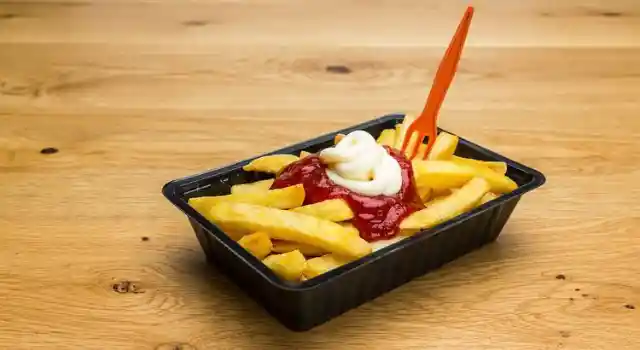
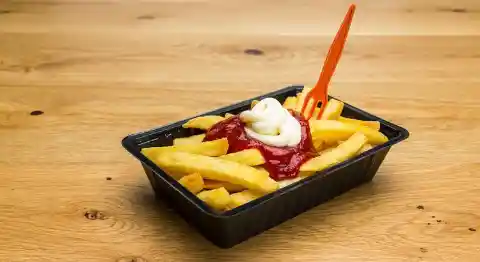
Fries are crispy, salty, and just plain ol’ delicious. That is, until you start breaking down what they actually are and what they’re doing to your body. Most fries are made from white potatoes, which are extremely high on the glycemic index. When you consume foods that have a high glycemic load (GL), you’re putting yourself on a path for possible weight gain.
If you’re already overweight, topping out with high GL foods could cause you to become insulin resistant, which is one of the precursors of Type 2 diabetes. As noted by Dr. Joel Fuhrman, “High-glycemic, nutrient-depleted, refined carbohydrates are more than just empty calories—they are disease-causing foods.”
Burgers
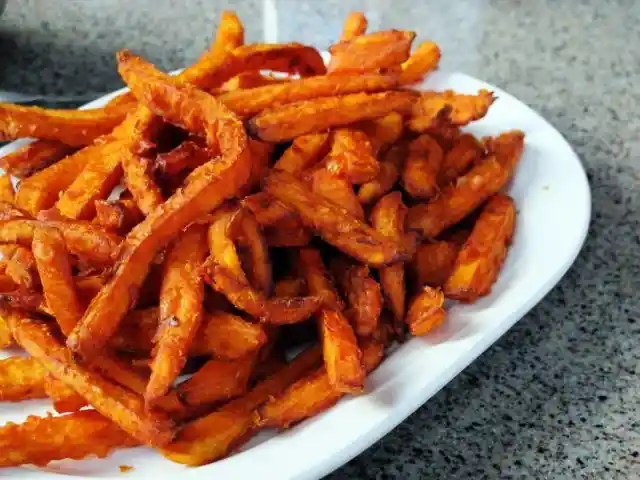
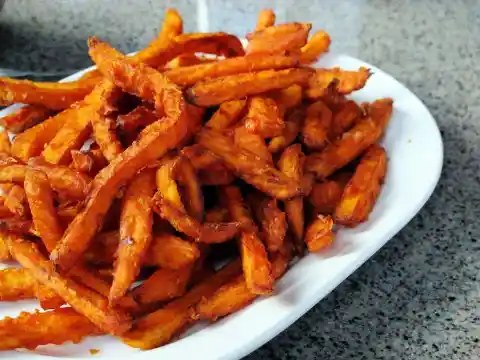
Enter the nutrient-dense sweet potato. Sweet potatoes are high in vitamin A and beta-carotene and are naturally anti-inflammatory. Because they’re a complex carbohydrate, they break down more slowly in your body and leave you feeling full. In addition, they’re an excellent post-workout food and are extremely delicious.
If ordering these, ask about preparation and steer away from those fried in regular vegetable oil. They’re extremely simple to prepare at home, too.
Solution: Grass-Fed Burgers
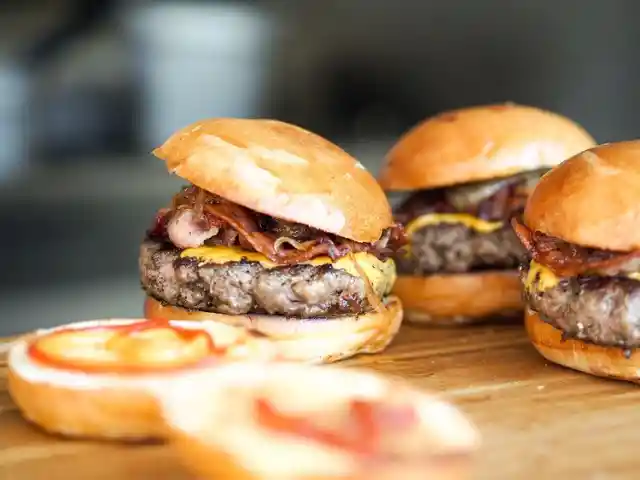

Big, juicy burgers look appetizing when seen in an advertisement, all luscious and dripping with goodness. You know where they don’t look as good? In your arteries and on your rear end. Commercially prepared beef from conventional feedlots is typically laden with antibiotics and bad fats.
Add that bun made from nutrient-stripped GMO grain, and your body isn’t going to be happy with you after this meal. Does this mean you must forever give up the beloved hamburger? Not a chance…
Chili
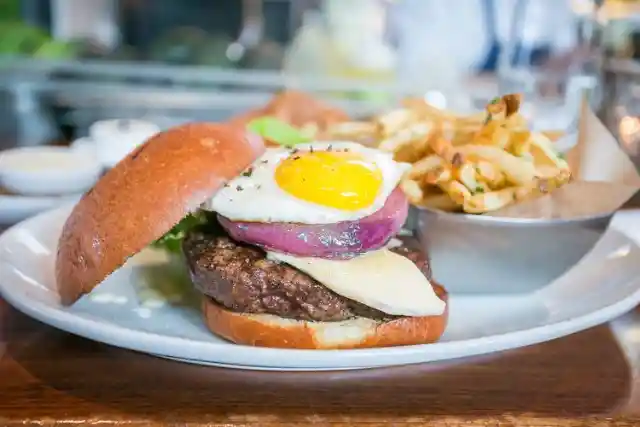

Burgers made with lean, grass-fed beef, lamb, elk or bison meat are an excellent choice. Add an avocado for some healthy fat. You can do a lettuce wrap instead of a bun (a clever way to get in extra greens). If you’re making burgers at home, consider adding green chilies and spices and then topping it with a free-range egg. Free-range eggs are high in omega-3 fatty acids.
According to Dr. Joel Fuhrman, these can help “reduce the risk of sudden cardiac death and heart attack, slow growth of plaque in the arteries by decreasing inflammation, improve lipid levels, enhance blood pressure regulation, and reduce pulse pressure.” They’re also a great source of protein.
Solution: Legume-Free Chili
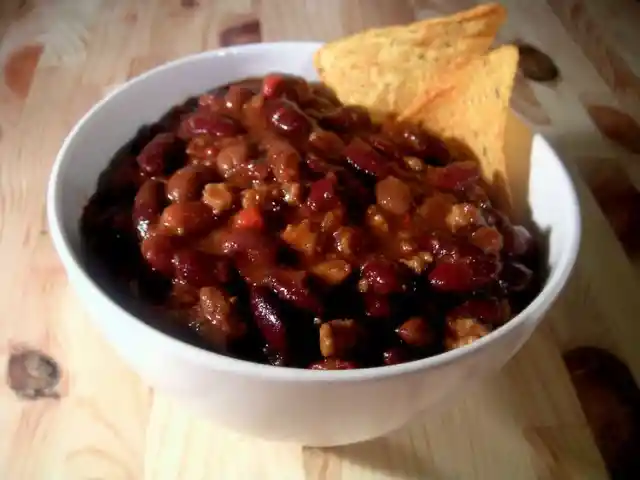

There’s something about chili that just makes you feel better, especially on a cold day when you just want to snuggle in and treat yourself. But eating highly processed chili from a can is no way to treat yourself. It’s loaded with sodium—in fact, some canned chili has a whopping 1100 mg of it. High sodium intake has been proven to be a precursor for future high blood pressure (hypertension). Hypertension can cause cardiac arrest and sudden death.
Let’s get on the same page – nothing out of a can is worth dying for! So now you’re wondering how you can make it at home…but not so fast! Traditional chili is chock full of beans and other legumes that can aggravate a leaky gut. So what’s the solution?
Potato Chips
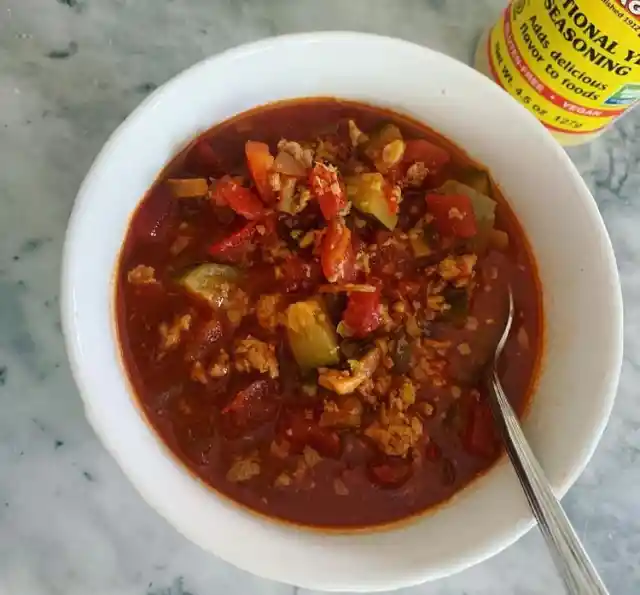

You can still have healthy, delightful chili at home that’s really quite good for you. Grass-fed beef or bison, onions, garlic, tomatoes and carrots, and unprocessed cocoa can make an exquisite chili meal.
Top with avocado for creamy goodness and good fat. Avocados provide monounsaturated fat and nutrients like potassium, B vitamins, and vitamin E.
Solution: Kale Chips


When you’re craving salty goodness, chips are usually an excellent go-to. Where they fall short is in nutritional value. Most chips are made from highly processed ingredients, unpronounceable chemicals, and cooked in oils that are full of trans fats. Mark Sisson points out that trans fats can cause more weight gain than a diet with monounsaturated fat.
That fat ends up in your abdominal area, which is the riskiest place to carry it, as fat there has been linked to cardiovascular disease. These types of unnatural fats are also connected to inflammation and plaque in the arteries.
Dip/Salsa


The bold, pungently flavored superfood can made be into an excellent chip. Toss some kale strips with olive oil, add sea salt and black pepper, and bake in your own oven.
As far as snack foods go, this one might top the list when it comes to flavor- if (and that’s a big if) you get the bake time right. Don’t go too crispy, in spite of your inclination to want to do so.
Solution: Real-Ingredient Dip/Salsa
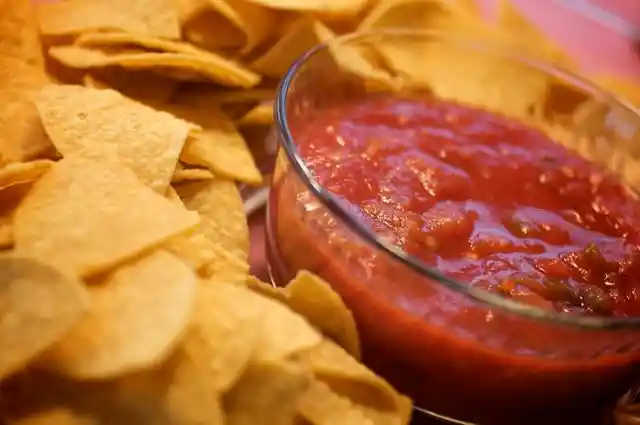

This will likely be the easiest hack of all! Salsa is already chock full of nutritious ingredients: tomatoes, peppers, onions, and cilantro. We suggest making your own at home because it’s so easy and you’re completely in control of what goes in it. If you want to pick some up at the store, look for fresh salsa (usually in the refrigerated section) that contains only real food ingredients.
But what if you have an allergy or autoimmune disorder that keeps you from eating nightshades like tomatoes, peppers, and onions?
Pizza


Unprocessed, premade guacamole (or even just a mashed-up avocado) can serve as an excellent dip for carrots, celery, or almond chips. Add cumin to enhance the flavor. Cumin packs loads of iron and helps aid digestion.
Craving something a little different in the dip department? Add a cup or so of cashews to the food processor, then mix with canned, drained artichoke hearts and thawed out organic spinach from the frozen food aisle. Toss it in the oven to warm it through. Cashews are high in omega-6 fatty acids and monounsaturated fats. Spinach gives you a whopping amount of many nutrients, including vitamins A and K, folate, manganese, and magnesium.
Solution: Grain-Free Pizza


Mmmm. Pizza. Just saying the word brings a plethora of images to the brain’s pleasure center. But for the dairy and gluten intolerant or those just wanting to drop a few pounds, pizza is anything but a great meal. It’s loaded with the wrong fat and preservatives.
When ordering out, ask for a gluten-free crust and olive oil base with loads of veggies. Eating vegetables is linked to a decreased risk of Alzheimer’s, cardiovascular disease, cancer, cataracts, strokes, and some age-related conditions. That’s the best you can expect when eating at a restaurant. But if you want to have truly guilt-free pizza, you’ll love our easy recipe…
Mac And Cheese


You can make a delicious grain-free pizza crust at home. And for you meat lovers out there, you can even make a pizza “crust” from ground grass-fed beef or bison. Really. Just spread the ground meat on the bottom of a pan and cook until done, then add all the yummy vegetables to the top and cook until done.
Be innovative—basil, spinach, and cashews are all great on pizza. If you must have cheese, consider a raw or organic full-fat minimally processed cheese.
Solution: Dairy-Free Mac And Cheese


Who doesn’t love mac and cheese? We’ll tell you who—the beneficial bacteria living in your gut! Aside from those critters though, us mere mortal humans might not agree on everything, but who can honestly say that they wouldn’t love to dive into a hearty, cheesy, gooey bowl of mac and cheese? Nobody.
Loaded with chemical preservatives, regular mac and cheese contributes to conditions such as leaky gut and autoimmunity. But does this mean you need to give up on this indulgent meal? Not necessarily, as long as you choose the right ingredients. In fact, your real-food hack for this favorite dish should taste even better…
Pancakes
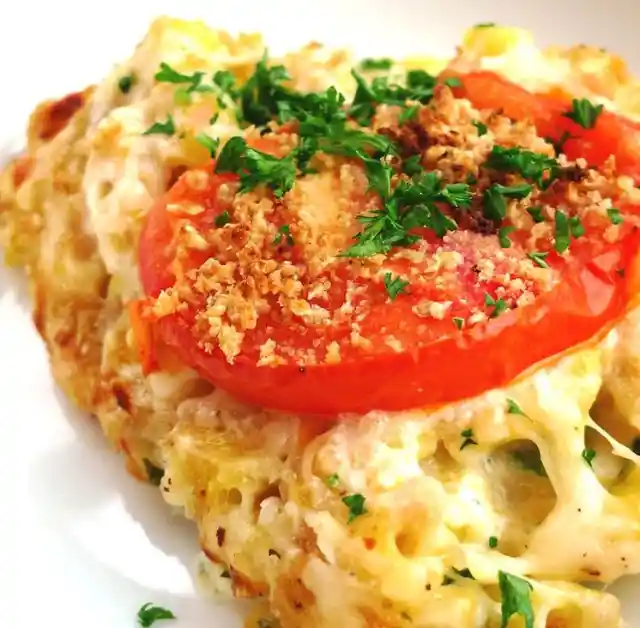
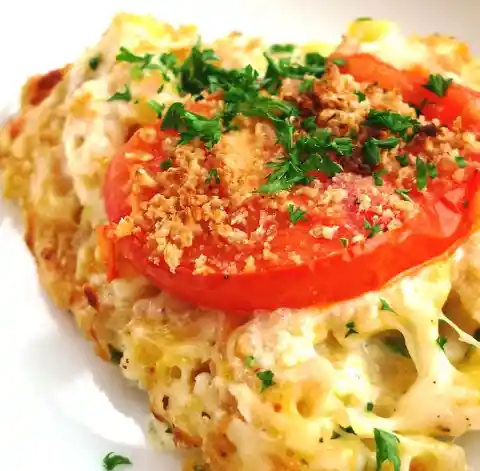
Make your own non-dairy mac and cheese at home using nuts and almond milk. If your system can’t handle gluten, but you can tolerate other grains, consider using quinoa or rice noodles. Quinoa is often touted as a grain replacement. It’s related to vegetables like Swiss chard and spinach and is a complete protein; it provides all nine essential amino acids, as well as copper, iron, magnesium, manganese, and phosphorus.
Proteins are important for building muscle mass and increasing your resting metabolism. And like Dr. Mark Hyman reminds us, “Since muscle burns seven times as many calories as fat, that’s a good thing.”
Solution: Banana-Egg Pancakes
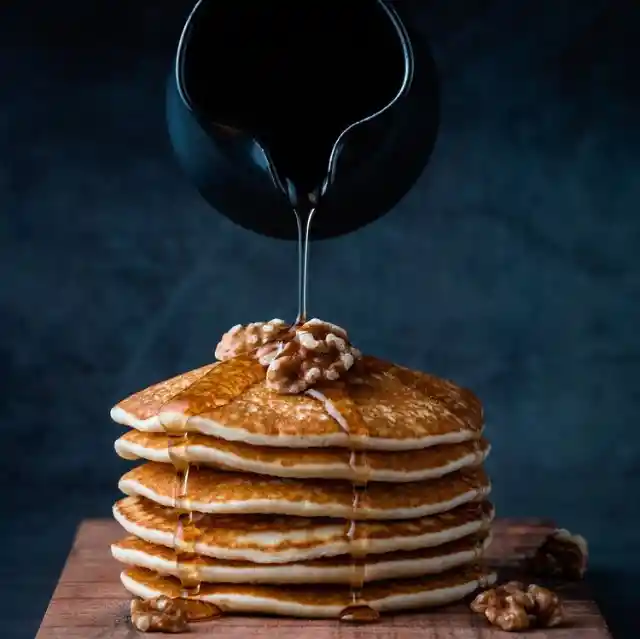
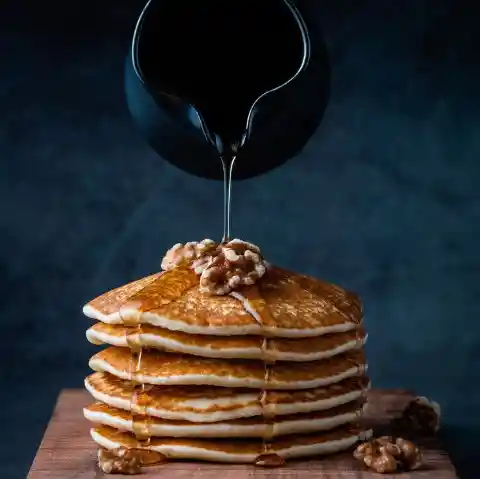
We know—sometimes eggs just won’t do for breakfast. It’s okay. Holidays, weekends, and the occasional Tuesday are made for pancakes, because much like mac and cheese, pancakes are a very difficult food to dislike.
If you’re eschewing grains, pancakes might seem like a treat that’ll never come your way again. But think again. With nothing more than a few simple ingredients and a minimal amount of time, pancakes can remain a part of your life for the long haul…
Chocolate Chip Cookies

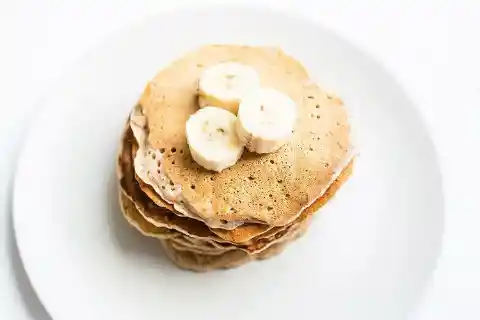
Let’s dive right into a perfect grain-free pancake that’ll have you coming back for more. Two ingredients- bananas and eggs. Doesn’t get a whole lot easier than that, and you won’t be compromising in the flavor department either.
Not sold yet? How about this- you can eat these almost daily, without guilt. If you want to go really crazy, top them off with a little raw honey, and sprinkle some Ceylon cinnamon on them for some extra good measure.
Solution: Almond Butter Dark Chocolate Chip Cookies


A study of 2,767 participants measured calories consumed in a 24-hour period, and overwhelmingly, the calories people chose to eat were in the form of junk foods. That’s not great news.
What’s good to know is that you can make a divine, grain-free, dairy-free chocolate chip cookie that’s actually good for you! While we don’t recommend these as a mainstay in your diet, these are treats you can actually feel good about eating…
Mashed Potatoes


To be clear, this one isn’t for every day. But if you’re going to indulge, this removes a lot of the guilt. Start with a high quality almond butter. There are several really good brands available commercially now.
From there, you can follow a traditional cookie-baking recipe, minus any sugars, and using only real 90%+ dark chocolate. The taste of these is out of this world.
Solution: Cauliflower Mash
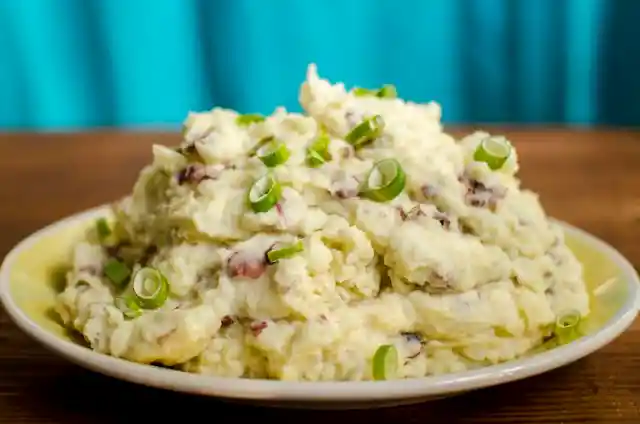
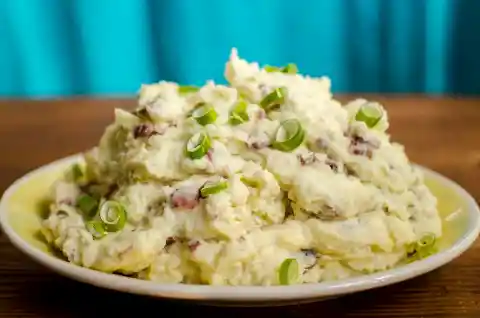
The mainstay of Thanksgiving and many a Sunday family dinner has moved from a delectable side dish to an all-time favorite comfort food. What should cause you to feel uncomfortable is that, as we discussed before, white potatoes can cause an increased insulin response.
Just as with fries, mashed sweet potatoes are a great alternative. If your body is okay with dairy, you can add ghee (clarified butter) or full-fat butter from grass-fed cows, along with the herb tarragon for an appetizing and savory experience. Tarragon can help with digestive issues and may even cause “cooling” for those experiencing hot flashes. For those wanting to limit starch intake altogether, you’ll love our potato-less mashed potato recipe…
Ice Cream


Cauliflower can easily take the place of potatoes without you noticing the difference in taste, while definitely noticing the difference in post-meal feelings. Boiling cauliflower, draining it, and throwing it in the food processor makes an amazing mashed potato substitute.
When mashed, it has nearly the same consistency as potatoes and can be dressed up easily with butter, salt, and pepper. Cauliflower is high in phytonutrients, natural chemicals that can help ward off disease.
Solution: Dark Chocolate-Banana Ice Cream


Summertime and ice cream. Birthdays and ice cream. Dining out and ice cream. Ice cream just goes with so many occasions. Unless, of course, that occasion is a leaky gut, dairy allergy, or weight loss plan. The good news is that you can now find some pretty good alternatives to the chemical-filled ice cream that you see around.
Coconut milk ice cream is now available at many grocery stores, such as Whole Foods and other high-end organic markets. You can also make delectable dairy-free ice cream and shakes at home. Here’s how…
Nachos


Start with some high-quality dark chocolate, and work from there. Dark chocolate with a high percentage cacao and low or no sugar is good for your heart and may even lower your blood pressure. A square or two can be eaten as a treat or made into a tasty shake. If you’re up for adding more chocolate to your healthy lifestyle (frankly, who isn’t?), then this healthy dessert is bound to become a staple in your recipe book.
Throw dark chocolate, half an avocado, a whole banana, a couple of teaspoons of coconut oil, Ceylon cinnamon, and a pinch of high-quality salt into your food processor (or Vitamix). Process on low for 15 seconds. Take the end product out, put it into jars, cups, or a bowl. Put it in the freezer for a few hours. Then later that night- voila. Homemade ice cream joy.
Solution: Sweet Potato Nachos
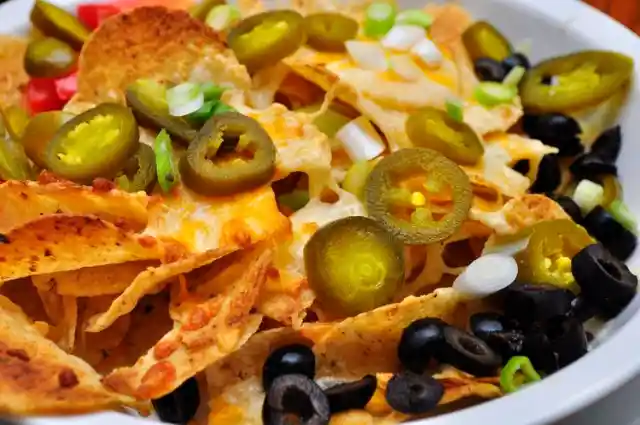

Nachos might seem like a stretch. Loaded with cheese, salt, and corn, they hardly seem an easy hack. No dairy intolerance, you say? Then by all means, use full-fat real cheese made from organic non-rBGH cows and the rest of it will seem like just a side trip into culinary creativity. Organic non-GMO corn chips can work for you too.
If, however, you can’t digest dairy, or if corn sends you running for the allergy meds, we’ve got substitutes that could really delight your taste buds. But in all fairness, we’re going to be straight with you. There’s no non-dairy cheese replacement that’s going to have the same chewy, stringy deliciousness of real cheese. And that’s ok. What we’ve got in store for you will make your taste buds swirl in a whole new kind of way…
Orange Chicken
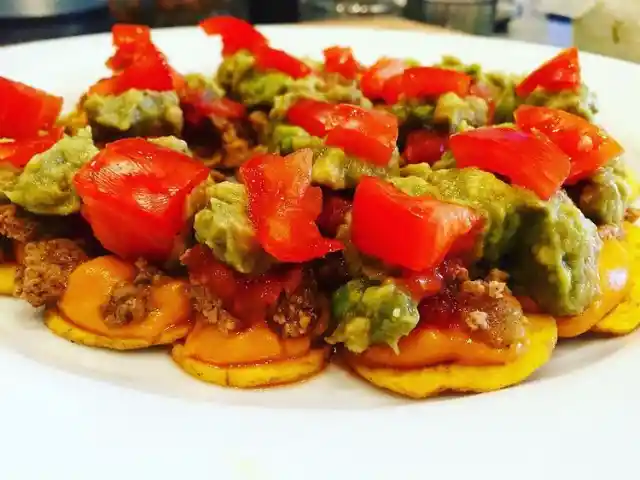
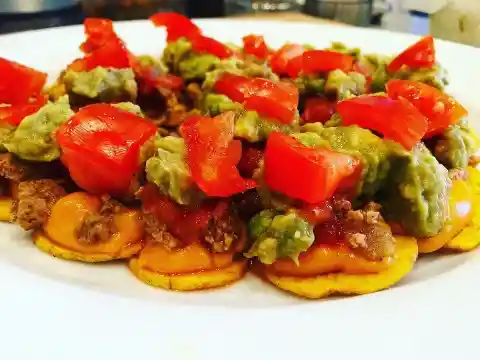
Nachos made with sweet potato chips and loaded with grass-fed meat, avocado, olives, and fresh tomato salsa are so beyond delicious that you’ll forget all about those store-bought nachos you’d been consuming every year while watching the big game.
Non-dairy cheese flavoring can be found in the form of nutritional yeast; it’s the go-to favorite for many a vegan with a cheese craving. It has a nutty, cheese-like flavor and is a good source of fiber and B-complex vitamins. It has low sodium content and adds folic acid, iron, potassium, and selenium to your diet.
Solution: Unprocessed Orange Chicken


Ever find yourself in the mall, inexplicably drawn to the food court in search of the tangy, sweet, and tempting treat that calls itself orange chicken? The next time that happens, run the opposite way.
You’ll get in some cardio, and you’ll be escaping all those processed, high-calorie, low-nutrient foods. When the craving persists, never fear—this scrumptious treat is no further than your very own kitchen…
Peanut Butter And Jelly Sandwich


You can easily make this in a slow cooker with chicken thighs and some readily available ingredients, including raw honey and coconut aminos. Raw honey aids digestion, helps with allergies, and is high in vitamins and minerals that help to boost your immune system.
The other mainstay of this recipe is coconut aminos, which are a grain-free, soy-free, soy sauce alternative. Add some boiled cauliflower “riced” in the food processor and the mall food court offerings will seem so far away, you won’t even miss them.
Solution: Nut Butter And Organic Berries Sandwich

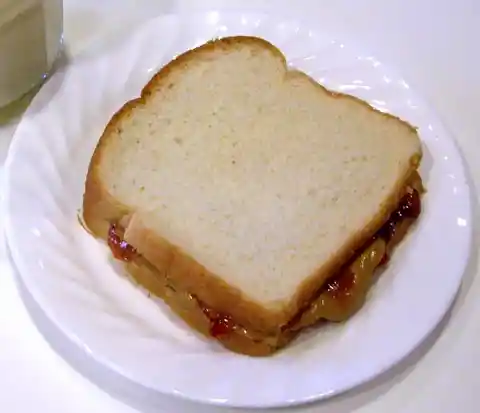
For many of us who were fortunate enough to grow up without a nut allergy, peanut butter and jelly sandwiches were a staple in our childhood. And frankly, well into adulthood. You can’t tell me that when you need a quick, familiar snack, that PB and J doesn’t just hit the spot.
Here’s the reality though. Artificial legumes and blood sugar-spiking pseudo fruit slathered on a slice of nutritional emptiness. That’s your run of the mill peanut butter and jelly sandwich. Not as appetizing as it was a mere paragraph ago, now is it? As you know by now, we’ve got the solution to this PB and J dilemma.
Gummy Bears
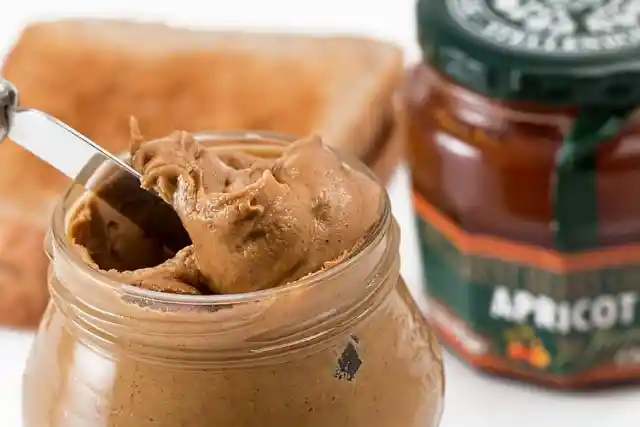
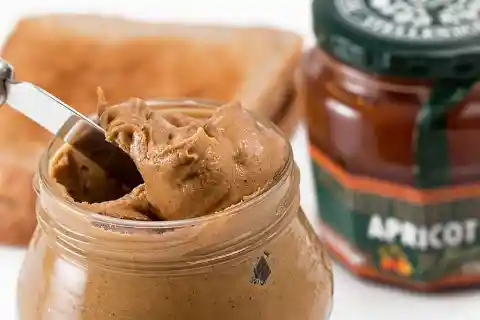
Nut butters are an incredible source of protein and good fats. Be sure to look for the ones without any added sugars. Berries give you antioxidants and flavonoids, which boost your health.
These are actually many store-bought options of nut butters available nowadays, so just be sure to read labels, and avoid the ones with many ingredients that you can’t pronounce.
Solution: Homemade Lemon-Blueberry Gummies


So colorful, adorable, and squishy. Sadly, making these a regular part of your diet will only transfer their squishy quality to you. Loaded with chemicals, dyes, and sugar (usually in the form of high fructose corn syrup), these bears won’t do you any good.
Avoiding candy is obviously a part of any healthy eating plan, but what about when you just have to have some? Or when your kids insist on consuming some candy and you no longer have the strength to say no?
Jell-O®


Believe it or not, gummy candies are easy to reproduce at home and can even be good for you. Yep, I said good for you. The main reason is that one of their key ingredients is gelatin (not to be confused with that packaged sugar product that bounces on tables).
Gelatin comes from animal bones and gives you protein in the form of the amino acids glycine and proline. Although glycine is produced by your body, supplementation may help with sleep quality as well as combat free radicals. Proline is one of the building blocks for producing collagen in your body (hello, great skin). So whip up a batch of gummies with organic juice, fresh berries, and reliably sourced unflavored gelatin to enjoy when the mood strikes.
Solution: Homemade Apple Gelatin
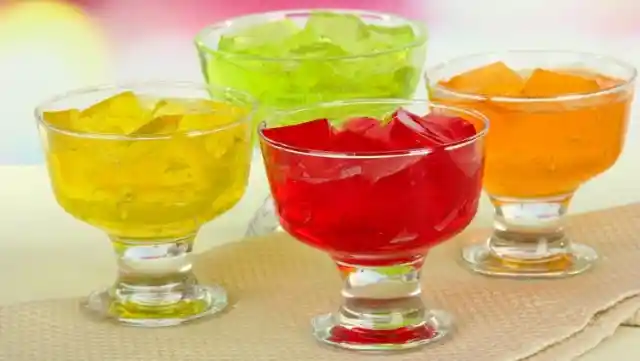

When you first discover that Jell-O® is more than remotely related to a healthy food choice, your jaw gets temporarily locked in the agape position. Happens to everyone, so don’t be alarmed. Believe it or not however, Jell-O® wasn’t always the processed, chemical-laden snack that it’s become. Like with most other nutritious foods, we’ve found a way over the last century or so to industrialize, process and completely de-nature what was once a staple health food. You read that right – a staple health food.
If your kids yank on your pant-leg a little too often requesting Jell-O®, we’ve got the solution for you- but admittedly, this one might take a little adjusting to, if you’re coming from sugar-laden Jell-O®…
Store-Bought Yogurt


While the term Jell-O® is a registered trademark of the Kraft Foods company, the original and real term for the food is gelatin. Yep, that’s right- we’re talking about gelatin again. Gelatin is a protein produced from collagen extracted from boiled bones, connective tissues, and other animal products, and has been a component of food, especially desserts, since the 15th century.
While boiled bones might not whet your appetite, remember that you’ve likely been consuming them for years as it is, and now you can actually reap their full range of benefits. Gelatin balances out your meat intake by providing adequate glycine to balance out the methionine, heals your gut and promotes healthy bowel movements by restoring a healthy mucosal lining in the stomach and enhancing gastric acid secretion, makes your skin glow by providing glycine and proline, two amino acids used in the production of collagen, protects your joints by fighting off inflammation, and helps you sleep, as glycine is an inhibitory neurotransmitter that can promote mental calmness. By now, you should be clamoring for the recipe. So here goes:
Ingredients:
8 cup capacity food container
Water
Unsweetened apple cider (not apple juice!)
4 tablespoons of high-quality, unsweetened, unflavored, pure gelatin
Directions:
Pour 1 cup of cold, filtered water into the food container.
Put 4 tablespoons of gelatin into the cold water and whisk it for 30 seconds, before letting it sit to dissolve.
While the gelatin is dissolving, boil 3 cups of water.
Pour the 3 cups of boiled water into the food container and stir well.
Pour in 4 cups of the apple cider and stir well again.
Place the food container in the fridge for at least 8 hours to congeal. You now have the most nutritious gelatin dessert around and your kids will love it!
Solution: Homemade Lactose-Free Fermented Yogurt
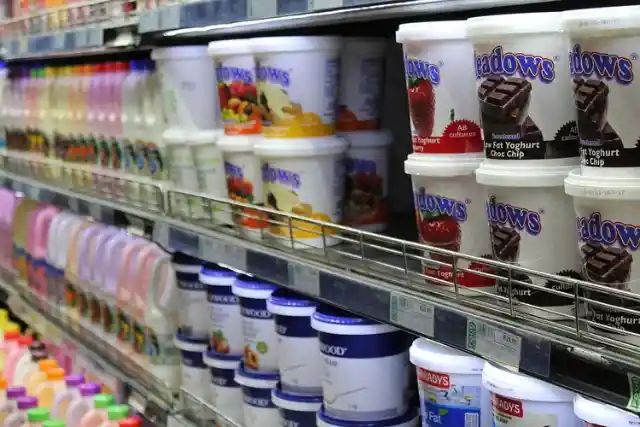
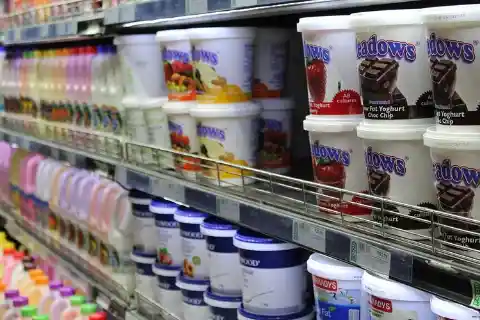
I know what you’re thinking. Yogurt is supposed to be healthy! Many years ago, it was. Today, not so much. With promises of health benefits galore, most notably probiotics, yogurt should be a staple in the diet of anyone who has no issues with dairy.
The problem with store-bought yogurt is that over-processing, preservatives and added thickeners greatly reduce this food’s natural benefits. If you’re consuming flavored or sweetened yogurts, it gets even worse. These are often nothing more than over-processed milk, with added sugar and artificial sweeteners. With that said, yogurt was meant to be a healthy food, and it can be. Here’s how…

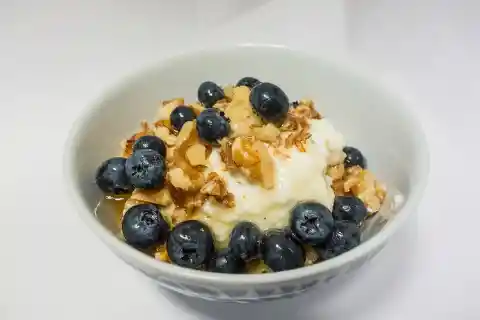
What’s all the hype about probiotics? As we speak, there’s a turf war going on inside your gut. It’s good bacteria vs bad bacteria. In order to maintain good health, or to improve subpar health, your gut need to be in a state of symbiosis (meaning the bad guys need to be kept in check). This is why it’s imperative to ensure that you’re getting enough beneficial bacteria through diet and supplements. What makes this homemade yogurt recipe so special is that it’s far more powerful than any source of commercial probiotics available on the market.
Most probiotic supplements deliver anywhere from 1-10 billion CFUs per capsule, and can’t even assure you that the beneficial bacteria hasn’t been killed while in transit to the grocery store or to your home. This home made yogurt delivers a massive dose of 700 billion CFUs per cup! So while taking probiotics can help, it’s almost like chipping away at a 50-foot concrete wall with an ice pick. With that out of the way, here’s how you go about making super yogurt that is also MUCH cheaper than store-bought yogurt in the long run (and not even very long).
Ingredients:
Yogourmet Multi Yogurt Maker
Yogourmet Freeze Dried Yogurt Starter, 1 ounce box (Pack of 3)
2 quarts of Organic cow’s milk or goat’s milk, with no additives
Water
Directions:
Ignore the instructions that come with the Yogourmet. Seriously.
Pour 2 quarts of milk into a pot.
Heat the milk on low until it reaches 180 degrees Fahrenheit. Use the thermometer that comes with the Yogourmet.
Once it hits 180, remove the pot from the stove and let it cool down to 100 degrees Fahrenheit or less.
Once the milk has cooled down, pour one package (10 grams) of yogurt starter into the Yogourmet batch container and add just a 1/4 cup of the cooled milk to it. Stir until the starter is entirely dissolved.
Pour the rest of the cooled milk into the container and stir thoroughly.
Cover the container with its snap-on lid.
Pour 1 and a 1/2 cups of water into the Yogourmet yogurt maker itself.
Put the container into the yogurt maker and put the cover on top.
Place the yogurt maker away from your stove or any other items that can affect temperature. Plug it in and make sure that the red light has turned on.
Allow the yogurt to ferment for 24-34 hours. This is CRUCIAL. The lengthy fermentation process is what removes the lactose.
After the fermentation process is complete, remove the container VERY carefully from the yogurt maker and place it in the fridge to chill for at least 8 hours.
The yogurt will stay fresh for up to two weeks, so enjoy it fresh. You’ve now got delicious, beneficial, gut-healing yogurt that’s suitable for the whole family!